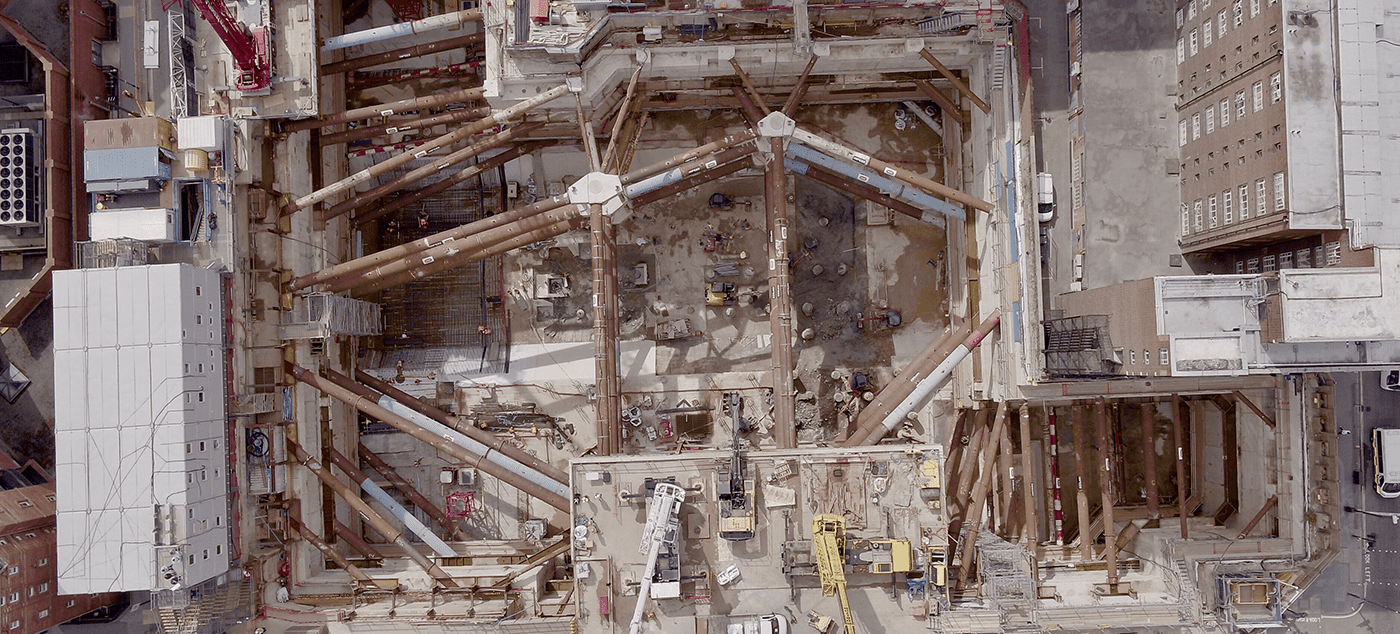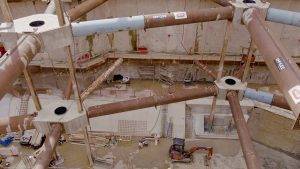
Supersize excavation in London
3 minutes of reading
One of London’s largest excavations has now been completed as part of the ground-breaking project for the construction of a cancer treatment centre, being delivered by Bouygues UK and Bouygues Travaux Publics.

 With five storeys below ground and a depth of 28.5 metres, it is big enough to contain the Royal Albert Hall or L’Opera Garnier. This basement will be home to one of two world-class NHS (the UK’s National Health Service) high energy proton beam therapy centres.
With five storeys below ground and a depth of 28.5 metres, it is big enough to contain the Royal Albert Hall or L’Opera Garnier. This basement will be home to one of two world-class NHS (the UK’s National Health Service) high energy proton beam therapy centres.
 Bouygues UK, in collaboration with the infrastructure expertise of Bouygues Travaux Publics, is delivering the PBT centre for UCLH, which, once completed in the summer of 2020, will treat up to 750 patients every year.
Fabienne Viala, Chairman of Bouygues UK, said: “This is exactly the kind of project we relish. The complexity of undertaking London’s biggest excavation within a tight site at the heart of central London enables us to add value through our technical knowledge and the infrastructure expertise of our colleagues within Bouygues Travaux Publics. This is no ordinary project: as well as being an innovative and complex build, the finished development will have the potential to improve and even save the lives of those suffering with blood disorders and complex cancers.”
Marcel Levi, CEO of UCLH, said: “It is a tremendous privilege to develop a clinical facility that will truly change people’s lives. Here we will be able to treat more adults and children with proton beam therapy, ensuring better recovery and fewer side effects than possible with other treatments.”
Watch the Drone footage of the excavation:
Bouygues UK, in collaboration with the infrastructure expertise of Bouygues Travaux Publics, is delivering the PBT centre for UCLH, which, once completed in the summer of 2020, will treat up to 750 patients every year.
Fabienne Viala, Chairman of Bouygues UK, said: “This is exactly the kind of project we relish. The complexity of undertaking London’s biggest excavation within a tight site at the heart of central London enables us to add value through our technical knowledge and the infrastructure expertise of our colleagues within Bouygues Travaux Publics. This is no ordinary project: as well as being an innovative and complex build, the finished development will have the potential to improve and even save the lives of those suffering with blood disorders and complex cancers.”
Marcel Levi, CEO of UCLH, said: “It is a tremendous privilege to develop a clinical facility that will truly change people’s lives. Here we will be able to treat more adults and children with proton beam therapy, ensuring better recovery and fewer side effects than possible with other treatments.”
Watch the Drone footage of the excavation:
More reading
Read also




What lies ahead? 7 megatrends and their influence on construction, real estate and urban development
Article
20 minutes of reading

